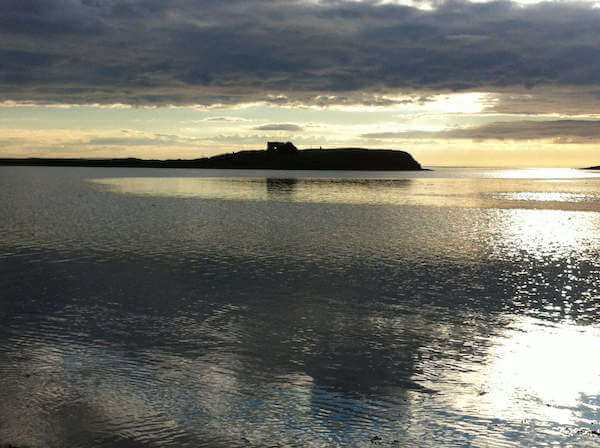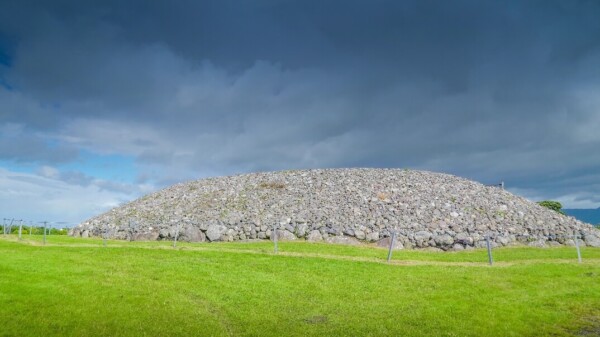Two of the most popular Sligo walks are part of a four-year research program funded by the European Union.
This news item contains affiliate links, and I may earn compensation when you click on the links at no additional cost to you.

The aim is to improve the quality of walking as an activity in the county.
The walks include The Queen Maeve Trail on Knocknarea, where the legendary queen of Connaught, a prominent figure of Irish mythology, is said to be buried, and the Killaspugbrone looped walk in Strandhill.
The research will examine how the creation of the trails has contributed to the local economy and to tourism in general around this area of County Sligo.

Finding ways to encourage tourists to explore the surrounding towns and villages after completing the trails will also be part of the research.
Both walks are run by Sligo Walks, which features over 60 great walks on its website, all of them catering to many different levels of fitness.
They include upland walks, as well as woodland walks and treks on coastal areas, rivers, lakes, and urban and rural walks.
The Queen Maeve Trail – What You Need to Know

The start of this particular trail begins in a car park that is opposite the Sligo Rugby Club in Strandhill.
If you are driving, be sure to put this into your GPS.
The Sligo Walks trail starts out as a stone path, passing through the Coillte forest.
After about 1.2 km (0.74 miles), you’ll find yourself on a raised boardwalk known as the “bog bridge.”
This can get slippery, so be careful.
Megalithic and Bronze age remains can be seen along the route, as well as abandoned old buildings.
A good deal of the path that leads to Knocknarea is private property, but thankfully, local landowners have given access to visitors wishing to get to the top this way.
Dogs are not permitted on certain sections of the Sligo Walks trail due to the presence of sheep and lambs.
Get to the top and you’ll be treated to a magnificent view of County Sligo as well as views of neighboring Counties Donegal and Mayo.
Of course, the real attraction is the cairn at the top of Knocknarea. Archaeologists believe it conceals a Neolithic passage tomb.
Measuring 55 meters high (180 feet) by 10 meters wide (33 feet), it is the second-largest cairn in Ireland.
The largest one is in the Brú na Bóinne complex in Co. Meath.
Researchers believe it was built around 3,000 BC and that the stones for the cairn were carried up the mountain from a nearby quarry.

There are other smaller monuments on the mountain, suggesting that this was a place of ritual for the ancient people of Sligo.
It’s not a good idea to climb on the cairn or take stones from it as this seriously damages the structure over time.
The Killaspugbrone Looped Walk – What You Need to Know
This is a beautiful coastal walk that will take you through sand dunes, salt marshes, and pine woodland.
You can catch this Sligo Walks trail at the promenade in Strandhill.
There are a couple of options if you choose this walk.

If you are feeling adventurous, you should take the headland route, which will bring you along the Killaspug Point area, or a shorter route, which will bring you close to the Sligo airport runway.
Of particular interest on this Sligo Walks trail is Killaspugbrone Church, founded by Bishop Bron Mac Icni, a contemporary of St. Patrick, in the 5th century.
The ruin you see today was built between 1150 through 1220.
Historians believe the building that existed before it was attacked by the Vikings.
Legend has it that St. Patrick when visiting the site, lost a tooth on the rough ground.
If you want to learn more, be sure to visit the National Museum of Ireland in Dublin where you will find the Shrine of St. Patrick’s Tooth.
The reliquary is said to have contained a tooth belonging to the saint.
In reality, it is a beautiful piece containing different objects made of wood, copper, alloy, silver, gold, and silver filigree, as well as rock crystal.
It is believed to be from the 12th through the 14th centuries.
You’ll also see the figure of St. John, the Virgin Mary, and several Irish saints surrounding the figure of Christ.
The reliquary was used in the early 19th century to cure sick animals.
